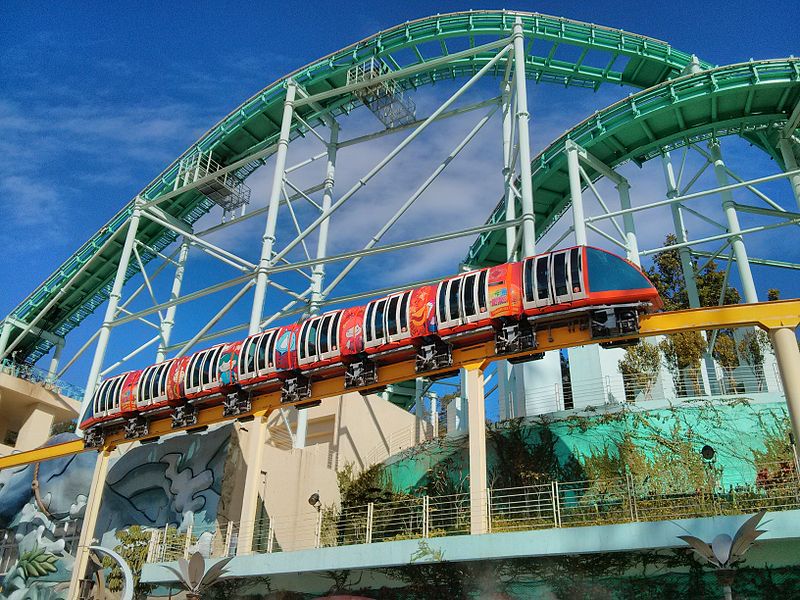
A couple of months ago we took a look at theme park rides and attractions. Below is a micro-interview with Todd Homme on the same subject, though more from a musical perspective. Todd has a varied background on both the creative and business sides of music for media having worked as a composer, music editor and music supervisor for dozens of films including “Gladiator”, “American Beauty”, “Saving Private Ryan” and (my personal favorite) “Road to Perdition”. He previously served as DreamWorks’ Senior Vice President Of Music. Part of his current day-to-day involves working as a music consultant for various theme park attractions.
Designing Sound: How early is music considered and incorporated in the process of creating an attraction?
Todd Homme: Attractions developed at theme parks do have a long runup to their opening day. Music is always in the plan from the beginning so it is never an afterthought or glued on. Everyone knows it will be just about everywhere, from the main ride to the areas surrounding that ride, so it gets lots of attention to make sure it enhances the experience and supports the story. Like the film business, the final commitment to the music – ie, the actual recording of any new masters, is left till late in the game; and this is for the same reasons. Changes stemming from all manner of discovery that happens when you take something from a blueprint to a physical reality. You learn things in the last stages that can’t be known from paper and computer modeling.
DS: What’s the typical makeup of a music team?
TH: Music depts are quite small but interact with large swaths of creative and tech disciplines. They must stay current throughout all development and production. They are intertwined.
DS: What are some unique constraints you face in attraction work?
TH: One of the unique challenges of music in rides is the aspect of having your audience in motion. With TV and theaters the audience sits still, the sound emanates from the screen in front, and is manipulated with panning and surround to exploit what you see on a stationary screen. A ride moves the audience through an ever changing landscape and varying imagery and perspective. One can contemplate that and conjure up a set of challenges and needs to find solutions to making the experience coherent.
And add to that, that rides often consist of chains of vehicles arriving at ‘beats’ or ‘story points’ at different times, yet you’re trying to tell them all the same story and to experience it in as unified a fashion as possible. It becomes a fascinating series of physical constraints to work around and with.
DS: What format / system are you typically monitoring on?
TH: All formats of audio are possible to be deployed, and often newly derived methods of monitoring or improvised ways of mixing the motion of a ride. You need to mix in a way that addresses how it will actually be heard.
DS: How do you account for the acoustic properties of the attraction during the mix?
TH: The best case is when early design attention has been given to what will most benefit audio in the physical construction, materials, placement of systems and so on.
DS: Are you able to mix in a controlled environment or does everything happen on-site?
TH: The site is really the mix location; before that, it is about knowing ‘intent’ from a composer pov. You can’t mix a thrill ride (for proper effect) in a studio.
DS: What’s the most exciting moment for you in a project?
TH: To experience an attraction as a paying customer when all the awareness of technical, production and creative energies expended, evaporate. At that point it is just great entertainment that allows you to forgot how it came to be. That is success.
Thanks to Todd for taking the time to answer our questions about his work in theme park attractions. For more on the subject, you can check out the interview we did in July with Tom Myers.
‘Had no idea that such effort was put into music at theme parks. I will now pay better attention!